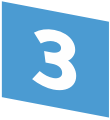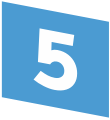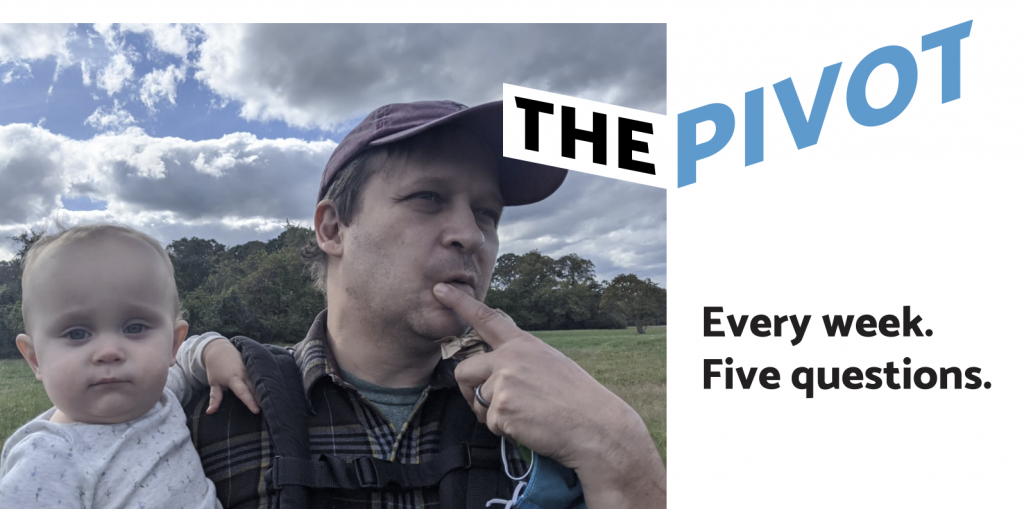Dr. Justin Lessler estimates how many people will get sick from a disease — and how public health measures can lower that number.

What’s your role in public health?
I’m a professor in the Department of Epidemiology at the Gillings School. I work in infectious disease dynamics, understanding how diseases move through populations in an ever-changing process. I try to bring in elements of theory and computational disease modeling and combine that with field work and research. The goal is for holistic data to inform policy and decisions about how we respond to disease threats.
I’ve worked with numerous diseases, from flu to cholera, from measles and HIV to coronavirus.

Can you describe your focus area in one sentence?
I study the drivers and controls of epidemics.
In other words: what determines how many people will get sick and how we can stop it.

What brought you to public health?
I’m a computer science grad from UNC-Chapel Hill. After I finished my degree, I worked at IBM for seven years, including in research. I started thinking that I wanted to do something more people-focused that used my quantitative skills.
I feel like, in computer sciences, we often sit around and say, “We have an amazing solution — now, what’s the problem?” In epidemiology, especially with infectious diseases, there are a million problems. You start there, then work to solve something. That might mean returning to tried-and-true methods; other times, it means developing a new approach or way of looking at things. Sometimes, it takes a little of both. For me, that’s been a much more satisfying way of approaching science. I like existing in a problem-driven world.

How have you pivoted in response to the coronavirus pandemic?
“Pivot” isn’t a strong enough word! I was working in infectious disease research when the pandemic began. Coronaviruses had always held interest for me, but I try not to get drawn into every potential emerging threat. The other diseases I work with are persistent threats, and I didn’t want to take time away from them. It’s important not to lose focus so you can make progress.
Then, in January of 2020, I spoke with a colleague who knew what was going on in China. I asked, “Do I need to be working on this?” He said, “Yeah, there’s definitely going to be a need for at least a few months to analyze emerging data.” Within 48 hours, COVID-19 was almost all I was working on, and that’s been true ever since.
There are multiple threads in my work. At different times during the pandemic, they’ve taken on different levels of importance.
Early on, I focused on understanding the disease itself. How transmissible is it? Which populations are especially susceptible? What is the incubation period? We had to learn about its basic properties so we could inform the public health response. (There’s still much more to learn, and we need to avoid the mistake of putting too much emphasis on early results and not updating our knowledge as time goes on; we’re still learning more about COVID-19.)
Once we had a basic grasp on the disease, I switched my focus to predictive modeling. Most of this centers on “planning scenarios,” which offer a forecast of what will happen in the immediate future. I also ran models based on longer term ideas about how the pandemic might unfold, given different actions the human population could take.
People often think this work predicts the future, but — as with the weather — we can say what is likely to happen in 10 days, or what will happen generally if climate change keeps going, but we can’t offer detailed predictions more than about a month out. There are just too many variables for accuracy. And there are so many more variables in play with an infectious disease than with the weather.
If a hurricane comes and everyone leaves Miami, the hurricane still hits Miami. With an infectious disease, if everybody changes their behavior — say, by locking down and staying home — we can stop a huge wave of cases from ever arriving. But people still need to know, even if it’s imperfect, how long they might have to keep their restaurant closed, for example. My job is to offer them the best estimate possible.
Last spring, we were seeing that case numbers would keep going down if we didn’t see a more transmissible variant – then, delta arrived. Delta also coincided with a lot of behavior changes as people became less cautious. So, it wasn’t that our earlier planning scenarios were wrong. Rather, the assumptions behind them shifted.
I also helped to launch the COVID-19 Scenario Modeling Hub, which brings together multiple groups doing this work to answer shared questions and interact with federal and local policy makers. All those interventions we put in place — everything we’ve done to try and respond to this virus — we want to understand how well it all worked.
We’re trying to show how things like mitigation measures in schools have affected the household-level risk of infection. In this example, we ran a survey with thousands of people, asking if the kids living in their house were attending school in-person and what mitigation measures were in place in their schools. We analyzed that data and found that there, while having a student living with you increases your infection risk, certain mitigation measures were effective enough to completely roll back that risk, making it the same as if you weren’t living with a student.

Who are you when you’re at home?
During the early part of the pandemic, there was nothing else but this work. I’m starting to carve back a little bit of my home life. I enjoy cooking, and I spend a lot of time in the kitchen. The one thing I managed to do every night during the pandemic was cook for my family, even if I stayed up until 4 a.m. and started work at 8 a.m. That was a way to spend time with my children.
In one sense, being an infectious disease researcher has been easier for me during COVID, despite the stress and lack of sleep, because I could do something. Other people I know have struggled with both helplessness and boredom, which I’ve simply been too busy to feel. I do think, once this is all over, I’ll be processing it for years.
Read more interviews in The Pivot series.
Published: 03/15/2022

